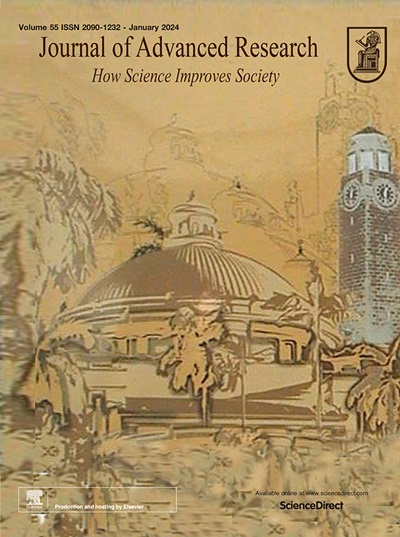Age-dependent elevation of Nr4a1 attenuates PI3K/AKT/GSK3β pathway and mediates tau hyperphosphorylation and cognitive impairments
IF 11.4
1区 综合性期刊
Q1 MULTIDISCIPLINARY SCIENCES
引用次数: 0
Abstract
Introduction
Tau hyperphosphorylation exhibited in Alzheimer’s brains is also commonly observed in aging process, however, the molecular mechanism underlying tau hyperphosphorylation in aging is largely unknown. The nuclear receptor subfamily 4 group A (Nr4a1) has been implicated in various pathophysiological processes including neurodegeneration, and was found to be increased in Alzheimer’s brains.Objectives
Our study aims to investigate whether and how Nr4a1 promotes age-related tau hyperphosphorylation and cognitive decline.Methods
Firstly, we examined Nr4a1 levels in hippocampus of Alzheimer’s patients, SAMP8 and aged mice. Tau phosphorylation levels and cognitive function were evaluated in hippocampal Nr4a1-overexpressed wild-type mice. Bulk RNA sequencing was performed to gain insight into the molecular mechanism by which elevated Nr4a1 levels drive tau hyperphosphorylation. Lenti-shNr4a1 was used to knockdown Nr4a1 in senescent neurons and hippocampus of SAMP8 mice, further, tau phosphorylation levels and cognitive function were evaluated. Molecular docking studies were conducted to explore the interaction between Nr4a1 and AKT.Results
Our findings revealed that Nr4a1 expression is elevated in the hippocampus of Alzheimer’s patients, as well as in the hippocampi of SAMP8 mice and aged mice. Notably, in SAMP8 mice, Nr4a1 expression increased in an age-dependent manner, suggesting a positive correlation between Nr4a1 levels and aging. Further investigation showed that hippocampal overexpression of Nr4a1 in wild-type mice led to tau hyperphosphorylation and cognitive dysfunction, which could be rescued by Nr4a1 knockdown in SAMP8 mice. By means of bulk RNA sequencing, we demonstrated that Nr4a1 induced tau hyperphosphorylation through the inhibition of PI3K/AKT/GSK-3β pathway. Furthermore, blocking Nr4a1-AKT interactions using competitive peptides reversed tau hyperphosphorylation.Conclusion
These results supported the hypothesis that age-dependent upregulation of Nr4a1 attenuated PI3K/AKT/GSK-3β pathway, leading to tau hyperphosphorylation and cognitive decline. Nr4a1 may represent a promising therapeutic target for mitigating age-related cognitive impairments.

Nr4a1的年龄依赖性升高可减弱PI3K/AKT/GSK3β通路,介导tau过度磷酸化和认知障碍
在阿尔茨海默氏症大脑中表现出的tau过度磷酸化在衰老过程中也很常见,然而,tau过度磷酸化在衰老过程中的分子机制在很大程度上是未知的。核受体亚家族4 A组(Nr4a1)参与了包括神经退行性变在内的各种病理生理过程,并且在阿尔茨海默氏症的大脑中被发现增加。目的研究Nr4a1是否以及如何促进与年龄相关的tau过度磷酸化和认知能力下降。方法首先检测老年痴呆患者、SAMP8和老年小鼠海马组织中Nr4a1水平。在海马nr4a1过表达的野生型小鼠中评估Tau磷酸化水平和认知功能。进行大量RNA测序以深入了解Nr4a1水平升高驱动tau过度磷酸化的分子机制。使用lentii - shnr4a1敲低SAMP8小鼠衰老神经元和海马中的Nr4a1,进一步评估tau磷酸化水平和认知功能。通过分子对接研究探究Nr4a1与AKT之间的相互作用。结果Nr4a1在阿尔茨海默病患者海马中表达升高,SAMP8小鼠和老年小鼠海马中表达升高。值得注意的是,在SAMP8小鼠中,Nr4a1表达以年龄依赖的方式增加,表明Nr4a1水平与衰老呈正相关。进一步研究表明,野生型小鼠海马Nr4a1过表达导致tau过度磷酸化和认知功能障碍,SAMP8小鼠可通过敲低Nr4a1来挽救。通过大量RNA测序,我们证实Nr4a1通过抑制PI3K/AKT/GSK-3β通路诱导tau过度磷酸化。此外,使用竞争性肽阻断Nr4a1-AKT相互作用可逆转tau过度磷酸化。结论Nr4a1的年龄依赖性上调可减弱PI3K/AKT/GSK-3β通路,导致tau过度磷酸化和认知能力下降。Nr4a1可能是缓解年龄相关认知障碍的一个有希望的治疗靶点。
本文章由计算机程序翻译,如有差异,请以英文原文为准。
求助全文
约1分钟内获得全文
求助全文
来源期刊

Journal of Advanced Research
Multidisciplinary-Multidisciplinary
CiteScore
21.60
自引率
0.90%
发文量
280
审稿时长
12 weeks
期刊介绍:
Journal of Advanced Research (J. Adv. Res.) is an applied/natural sciences, peer-reviewed journal that focuses on interdisciplinary research. The journal aims to contribute to applied research and knowledge worldwide through the publication of original and high-quality research articles in the fields of Medicine, Pharmaceutical Sciences, Dentistry, Physical Therapy, Veterinary Medicine, and Basic and Biological Sciences.
The following abstracting and indexing services cover the Journal of Advanced Research: PubMed/Medline, Essential Science Indicators, Web of Science, Scopus, PubMed Central, PubMed, Science Citation Index Expanded, Directory of Open Access Journals (DOAJ), and INSPEC.
 求助内容:
求助内容: 应助结果提醒方式:
应助结果提醒方式:


